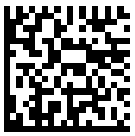To assert that from a wide range of different countries numerous people has become weathier thanks to the increase of economy during current years is really true. However, some studies address that while in developing countries people feel happier now than before, people in developed nations do not....
Check your IELTS writing task 1 and essay, this is a free correction and evaluation service.
Check IELTS Writing it's free


IELTS Writing Answer Sheet
Candidate Name:
Vanh Vanh
Center Number:
1
2
3
4
Candidate Number:
5
1
8
3
Module (shade one box):
Academic:
General Training:
Test Date:
0
D7
D0
M6
M2
Y0
Y2
Y2
YTire Shoulder Wear Justification
Tire Shoulder Wear Justification lnRgb
Until 13 April 2022, found significant numbers of main wheels removal due to shoulder wear, 20 of 21 wheels removed were caused by shoulder wear until ply visible, please refer to Appendix 1.
Refer to the Daily Check Sheets, all related wheels were inflated within normal range (200-210 psi), but shoulder wear still occurred.
For the CSI record of M01 – M17, the majority of these tires have reached 200+ cycles. Bridgestone assumes this shoulder wear is caused by more road surface contact in shoulder area which is caused by inflation pressure control. The study of Bridgestone and MAA results in a recommendation to keep in-service pressure in the optimum level (210 psi. )
This In service Evaluation (ISE) practice for IAA is required to monitor the tire performance on a daily basis, Bridgestone proposes to aircraft A320 installed by BS main tire PN: APS06755. The daily check item include:
Actual inflation pressure monitoring and record it in the check sheet. Once the inflation pressure is less than 210 psi, then have to adjust to 210 psi again.
Note: Please record the tire inflation if performed.
Actual RTD (remain tread depth monitoring). Measure the remaining tread depth daily, and record it in the check sheet.
Actual CSI (Cycle Since Installation), taken from the AMOS and recorded in the check sheet.
Shoulder wear phenomenon are disclosed on page 56 of Bridgestone Blue Book (See Appendix 4).
Until 13 April 2022, found significant numbers of main wheels removal due to
shoulder
wear
, 20 of 21 wheels removed were caused
by shoulder
wear
until ply
visible, please
refer to Appendix 1.
Refer to the Daily
Check
Sheets, all related wheels were inflated
within normal range (200-210 psi), but
shoulder
wear
still
occurred.
For the CSI record
of M01 – M17, the majority of these tires
have reached 200+ cycles. Bridgestone assumes this shoulder
wear
is caused
by more road surface contact in shoulder
area which is caused
by inflation
pressure
control. The study of Bridgestone and MAA results in a recommendation to keep
in-service pressure
in the optimum level (210 psi. )
This In service Evaluation (ISE) practice for IAA is required
to monitor the tire
performance on a daily
basis, Bridgestone proposes to aircraft A320 installed by BS main tire
PN: APS06755. The daily
check
item include:
Actual inflation
pressure
monitoring and record
it in the check
sheet. Once the inflation
pressure
is less than 210 psi, then have to
adjust to 210 psi again.
Note: Please
record
the tire
inflation
if performed.
Actual RTD (remain tread depth monitoring). Measure the remaining tread depth daily
, and record
it in the check
sheet.
Actual CSI (Cycle Since Installation), taken from the AMOS and recorded in the check
sheet.
Shoulder wear
phenomenon are disclosed
on page 56 of Bridgestone Blue Book (See
Appendix 4). Do not write below this line
Official use only
CC
5.5
LR
5.5
GR
6.5
TA
6.0
OVERALL BAND SCORE
5.0


IELTS essay Tire Shoulder Wear Justification
👍 High Quality Evaluation | Correction made by newly developed AI |
✅ Check your Writing | Paste/write text, get result |
⭐ Writing Ideas | Free for everyone |
⚡ Comprehensive report | Analysis of your text |
⌛ Instant feedback | Get report in less than a second |
shoulder
wear
shoulder
wear
Daily
Check
but
shoulder
wear
still
record
tires
shoulder
wear
shoulder
inflation
pressure
pressure
tire
daily
tire
daily
check
inflation
pressure
record
check
inflation
pressure
have to
record
tire
inflation
daily
record
check
check
wear
Copy promo code:M5jm2
CopyRecent posts
- In recent years, economic growth has made some people richer in both developed and developing countries. Studies show that people in developing countries are happier now than before, while in developed countries people are no happier than they were before.
- The chart below shows the percentage of unemployed people aged between 15 and 24 in five European countries in 2005, compared with the overall percentage of unemployment in those countries.The chart below illustrates the data of jobless individuals aged the range of 15 to 24 years in five European countries in the year 2005, compared with the general rate of unemployment in those countries. Overall, it is readily apparent that youth jobless percentages were higher than general jobles...
- NOWADAYS CHILDERN ARE GETTING OBESED THAN PAST. GIVE YOUR OPINIONChange is what people should have in their life. Life becomes more liveful after you get different changes. For now, the world is progressing very fast, The main reason behind that is youth. Many countries have chosen to give freedom to their young blood. There are some pros and cons that will be d...
- What I've learned in hotel and restaurant management"What I've learned in Hotel and Restaurant Management" It teaches me the importance of how to communicate with customers and guests in a professional, polite and warm manner. It also develops my communication skills, social skills, such as empathy, negotiation, listening, creative thinking, patienc...
- To What Extent Does The Geography of Resources Affect a Country’s Development?Secondly, countries with an ideal geography resources are more likely to grow better because their geographical locations provide them with lots of advantages and opportunities when progressing. For example, a country’s geography has a deep connection with its climate since where the country is loca...
- The bar chart shows the relative electricity consumption and cost per year of various household devices Write a 150 word report for a university lecturer explaining the data and making comparisons where relevant v. 2The bar graph gives information about relative electricity consumption and anual cost for 16 household devices. Overall, it can be seen that the highest consumption household on spa, electric blanhket is the lowest consumption of energy. Looking at the details, spa(pump or heater) consumes the hig...
- The exposure of international media such as films, TV and magazines has impacts on local culture. What do you think the impacts have been? Do you agree that the advantages outweigh the disadvantages?Nowadays, numerous people believe that local cultures have been affected by the international content such as music, movies, TV shows and magazines. In this essay, I will discuss both positive and negative impact of this. To commence with, international movies have remarkable positive impact on the...
- 21 st century is full of changesNowadays, many of us surrounded with various changes. These changes were quite slow until 21st century came. We may be noticed many processes that they will be regarded as a big deal. First of all, our lifestyle radically changed faster than ever. I think the way of our communication through compute...
- Many people are afraid to leave their homes because of the fear of crime. Some believe that more actions should be taken to prevent crime. Others feel that little can be done. Opinion essayThe number of the population who suffer from health problems from consuming a lot of junk foods are increasing in some countries. Some people think that the state should impose a higher tax on fast meals whilst others disagree with this idea. In my view, I disagree with that. On the one hand, peopl...
- You would like to work overseas, write a letter to an employment agency. Write: - - what job you would like to apply? - what companies are you looking for? - why do you want to work overseas?Dear Sir/Madam I am writing to your employment agency to enquire to suitable opportunities to work in Canada. I would be grateful if you can provide me references there. I have been working for over 14 years in the telecommunication field from India for many clients throughout the globe. Since I a...
- JOIN HANDS TO SAVE THE ASIAN ELEPHANTSA species is considered as endangered when its population has declined over 50-70 percent, it means that they are on the verge of disappearing forever if we do not have any adequate protection. Unfortunately, Asian Elephant is listed as the 10 most endangered animals in 2022 because of inhuman actio...
- Liu cho hêys K hết t đấm chết Đôi Dồi In the modern world, it is possible to shop, work and communicate with people via internet and live without any face-to-face contact with others. Is it a positive or negative development?In the modern world internet is having a significant impact on shop, work and communicate with people via the internet and live without any face to face contact with others Internet is a source of knowledge pregnant with much knowledge make it easy for people to find information, search for items to...
Get more results for topic:
- Tire Shoulder Wear Justification
